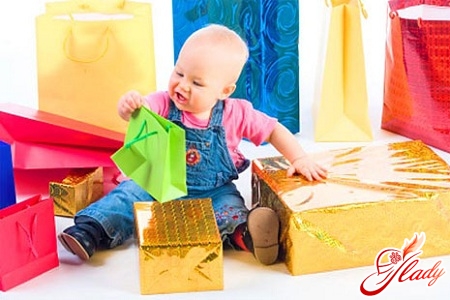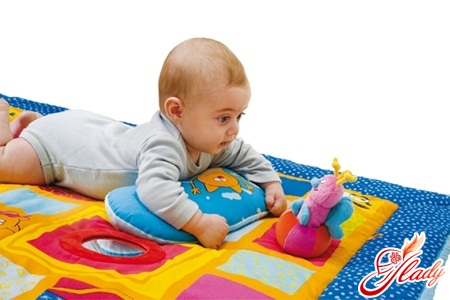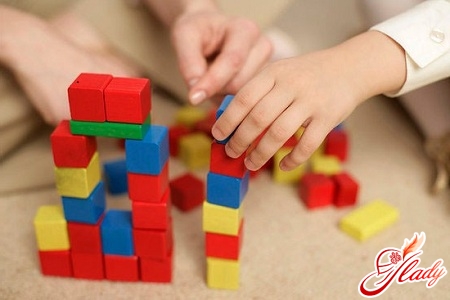 Once upon a time, the famous teacher Sukhomlinsky saidthat the child's mind is at the tips of his fingers. And these were not just beautiful words. Psychologists and speech therapists never tire of repeating that it is very important to develop fine motor skills - firstly, for the development of the child's speech, for the coordination of movements, and for preparing hands for writing, needlework, drawing, etc. That is why so much attention is paid to exercises for the development of fine motor skills of the hands. Otherwise, the baby may have serious difficulties, especially when he goes to first grade. Unfortunately, there are more and more such children lately. You can argue for a long time about what is the reason for such a massive violation of fine motor skills - either ecology or something else. However, there is absolutely no sense in these disputes. Therefore, it is much wiser to pay attention to the development of fine motor skills from the very birth of the baby. There are a huge number of different exercises with which parents can both prevent the possible development of problems and eliminate existing ones. The most important thing is not to put this matter off, as fine motor skills disorders will only worsen over time. And much more serious correction programs will be needed. Therefore, exercise your child's fine motor skills in a timely manner.
Once upon a time, the famous teacher Sukhomlinsky saidthat the child's mind is at the tips of his fingers. And these were not just beautiful words. Psychologists and speech therapists never tire of repeating that it is very important to develop fine motor skills - firstly, for the development of the child's speech, for the coordination of movements, and for preparing hands for writing, needlework, drawing, etc. That is why so much attention is paid to exercises for the development of fine motor skills of the hands. Otherwise, the baby may have serious difficulties, especially when he goes to first grade. Unfortunately, there are more and more such children lately. You can argue for a long time about what is the reason for such a massive violation of fine motor skills - either ecology or something else. However, there is absolutely no sense in these disputes. Therefore, it is much wiser to pay attention to the development of fine motor skills from the very birth of the baby. There are a huge number of different exercises with which parents can both prevent the possible development of problems and eliminate existing ones. The most important thing is not to put this matter off, as fine motor skills disorders will only worsen over time. And much more serious correction programs will be needed. Therefore, exercise your child's fine motor skills in a timely manner.
The child of the first year of life
Your baby's skillful and dexterous fingers area guarantee of full mental development (thinking, attention, imagination, visual memory). And so that the child does not get bored, various games and toys have been invented for the development of your baby. From 3-4 months, the child begins to grab everything that comes his way, squeeze and release, see what comes of it. The grasping reflex helps him to study the world around him. Therefore, various rattles are suitable for this age, and not only from plastic, but also from fabric, wood and other materials. Tactile sensations help the child to develop more fully, including improving fine motor skills. From 6 months, the child can be interested in a soft developmental book. And a larger version of such a book will be a development mat. Usually it is equipped with additional details, for example, squeakers and rustlers, soft springs, with which your baby will be happy to play. From 9-10 months, you can already buy a development center for the child. It is attached to the crib or installed on the table. A development center is a panel with various buttons, handles and disks that can be twisted, turned, pressed, etc. As practice shows, such centers have the most beneficial effect on the development of fine motor skills.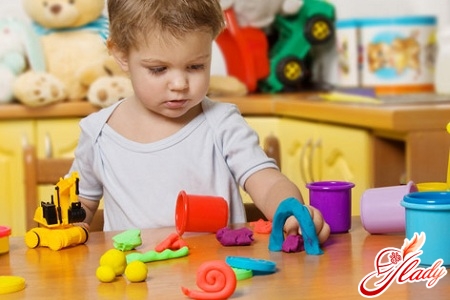
Children from one year to three
For children of this age, there are no ways to developfine motor skills are already much more. Moreover, all these methods are perceived by the child as an exciting game, which is also important. Mommies! Be prepared, after some of these activities, you will most likely have to clean up, so prepare a clean rag in advance. Water games. Almost all kids love such exercises. Of course, if they have a positive attitude towards water:
- Find me!
Pour clean warm water into a basin for the baby,Sit him down next to you and put several small plastic or rubber toys in the water. Ask your little one to get them out – as a rule, even a one-year-old can easily cope with this task. Then make the exercise a little more difficult – add a small amount of dark gouache to the water. The water will become cloudy and the toys at the bottom of the basin will not be visible. Your little one will have to work a little to get them out. And if your little one is approaching three years of age and is able to understand your instructions, ask him to get a specific toy from the bottom of the basin – believe me. His fingers will work very hard, because the baby must recognize the toy by touch. Of course, you cannot do such exercises in a cold room or if your little one is sick.
- Ah, this foam!
Another favorite pastime is playing with foam.Are you going to bathe your baby? Make a little more foam than usual. Show your baby how to make snowballs, squares and other figures from regular foam. Surely after this, taking a bath will become your baby's favorite pastime, and the benefits of such a game with foam are quite noticeable.
- Paints
All kids love to draw.However, until the age of 4-5, the brush does not want to obey the little fingers. But no problem! After all, finger paints were invented especially for such crumbs. You can draw with your whole palm at once. It is not difficult to buy such paints, they are available in almost any stationery store. But do not forget to buy sheets of Whatman paper - an album sheet will clearly not be enough for the creative flight of the baby.
- The most common children's plasticine
Of course, it is unlikely that your baby will create masterpieces,but the simplest geometric figures are quite within his power. And modeling develops fine motor skills of hands very effectively. But be very careful and do not leave the child alone for a minute - he can pull plasticine into his mouth. By the way, to avoid this, experts recommend modeling from dough for little ones.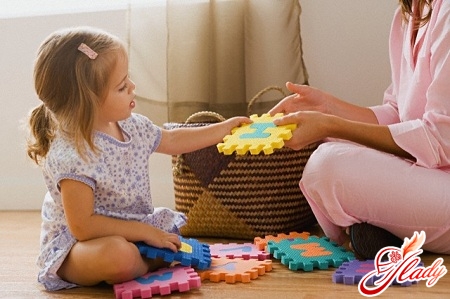
Child from three to six years old
For classes with children over three years oldExperts recommend using finger exercises. It is at this age that the child is already able to consciously repeat the exercises after you. However, strictly ensure that the classes are held exclusively in a playful form and the child should not do anything under duress. Otherwise, you can discourage him from wanting to learn for life. Please note - all exercises must be performed by the child sitting at the table.
- Greeting fingers
Ask your child to place his palms on the table andmove your fingers, connecting and moving them apart. By the way, absolutely any exercise should begin with such a warm-up. After this, your line is "fingers, hello!" The child should connect the thumbs of both hands on the count of "one", the index fingers on the count of "two", the middle fingers on the count of "three", the ring fingers and little fingers on the count of "four" and "five", respectively.
- Who is faster?
Ask your child to imagine that his fingers arethese are little people and arrange a running competition. To do this, the child must quickly move the index and middle fingers of the right hand and then the left hand across the surface of the table. After the child has mastered this exercise well, you can complicate the task and use both hands at once.
- Goat - Trees
All adults probably remember a similar game,because it is as old as the world. True, the "goat" is most often made for small children. But it will also come in handy for developing fine motor skills in preschoolers. Only it is not the mother or grandmother who should fold their fingers to depict the goat, but the child himself.
- Glasses
Remember the fable "The Monkey and the Glasses"?Why not stage it? Especially since you already have a monkey – it’s sitting at the table. All that’s left is to make glasses. Ask your child to connect the index finger and thumb on both hands – you’ll get rings. All that’s left is to put them to your eyes and the glasses are ready!
- Little Gray Rabbit Trouser
Turn off overhead lighting and direct the lighttable lamp on the wall. Show your baby a bunny. Remember how to do this? Put your index and middle fingers up, and connect your little finger, ring finger and thumb. Bring it to the lamp and you will see the shadow of a bunny on the wall. After that, ask your baby to make a bunny on his own.
- Считалочка
On the count of "one" the child should put his palmson the table, on the count of "two" - clench your fists, and on the count of "three" - put your palms on the edge. This exercise must be repeated at least five times.
- Trees
Ask the child to raise his hands up, and thenTurn your palms towards you. Blow on your baby's palms, imitating the wind. And let your baby move his fingers, like a tree with branches. This exercise should be repeated for two minutes.
- Checkbox
Ask the child to stretch out his arms in front of him, bring all his fingers together, and stick out his thumb. This exercise should be repeated at least five times.
- Nest
Do you have a toy bird?This means that the baby will probably be happy to make a nest for her. To do this, you need to put your palms together, touching the edges. By the way, speech therapists sometimes call this exercise a "boat". But this does not change the essence - the exercise is very effective and should be repeated at least five times. All these exercises for developing fine motor skills of the hands are very effective, but only if you work with your child regularly, at least three times a week. The training should last at least 10 minutes, but no more than 15. We recommend reading:




